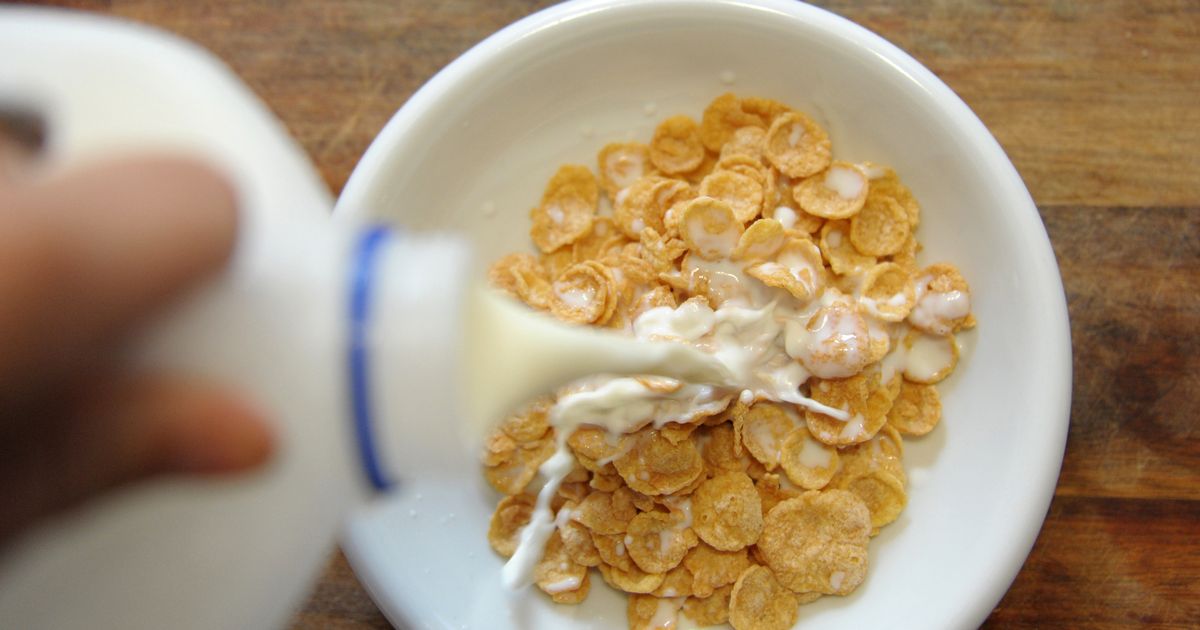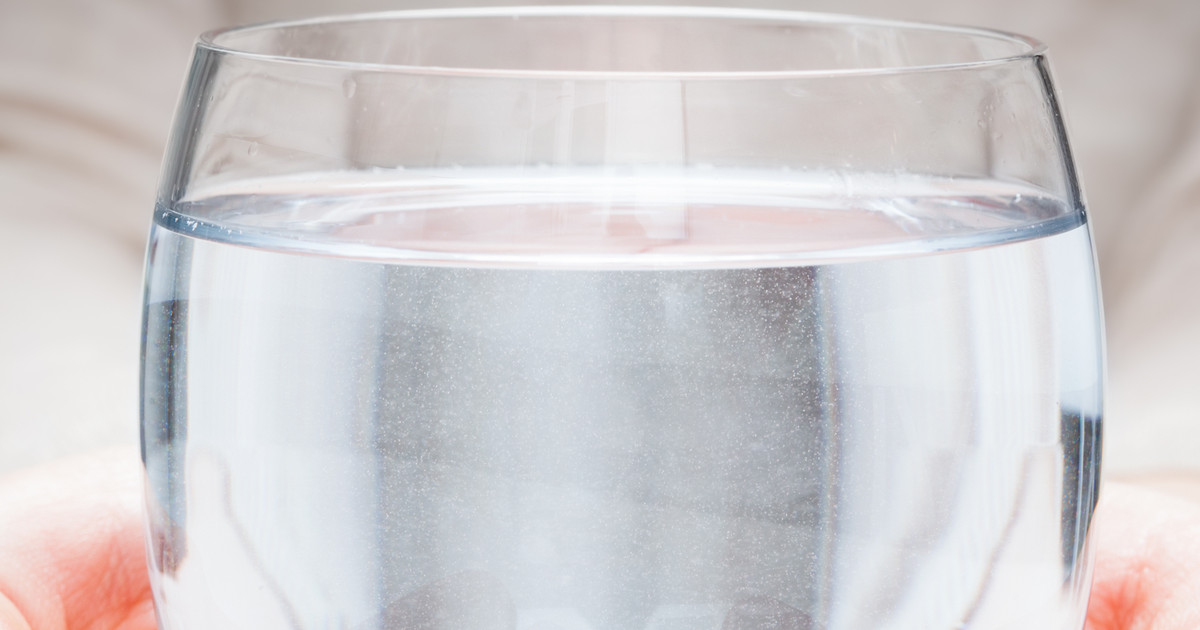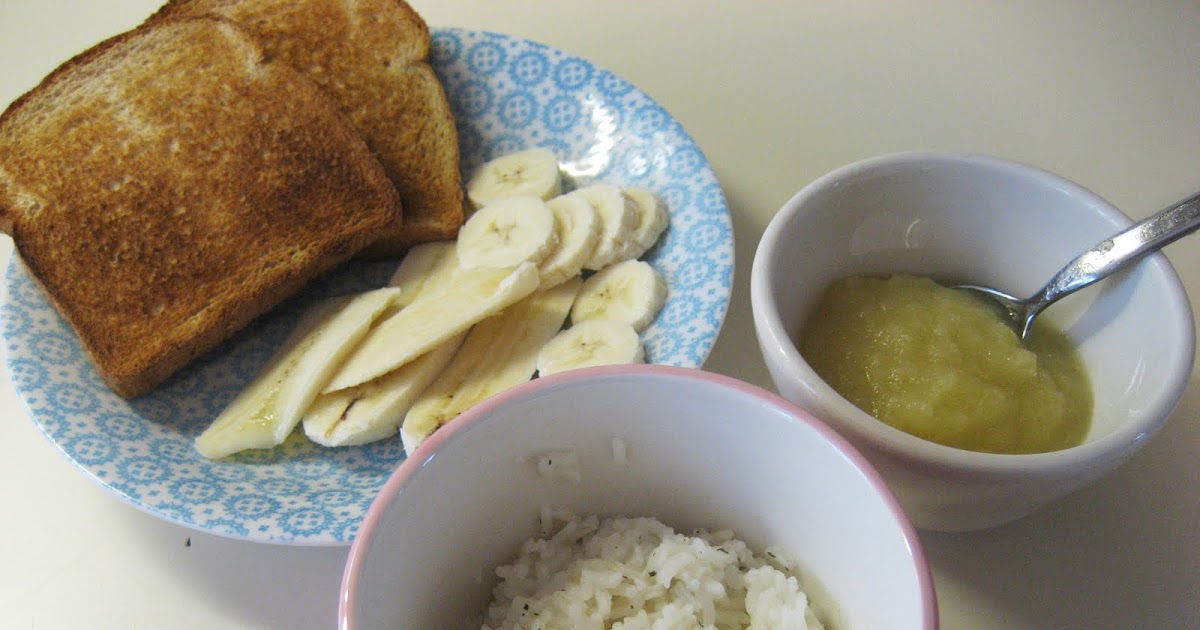What Is The BRAT Diet?
The BRAT diet is often used as a treatment method for individuals suffering from digestive issues, such as diarrhea, vomiting or illnesses such as stomach flu. BRAT, as many may be aware, stands for banana, rice, applesauce, and toast. The BRAT diet is thought to aid individuals with digestive issues due to the fact permissible foods are low in protein, fat, and fiber, making them more digestible for a weakened digestive system. There are many benefits to using the BRAT diet as well as a few pitfalls. As with any dietary plan, individuals should first find out as much information to make sure the plan is right for them.
Purpose Of The BRAT Diet

The purpose of the BRAT diet is to help individuals suffering from nausea, vomiting, and diarrhea due to digestive issues or illness. It is believed if an individual avoids foods that require the digestive system to work harder, such as meats and dairy high in fat and sugar, and only consuming foods that are easily digestible, the digestive system will begin to rebound and symptoms will be alleviated. The BRAT diet is intended to make stools firmer because they are higher in starch and lower in fiber and decrease nausea due to the bland taste and lack of strong fragrances.
Reveal the details on the foods permitted on this diet now.
Food Permitted On The Diet

Food on the BRAT diet must be easily digestible in order to decrease stress on the digestive system. Most notably, individuals are encouraged to eat bananas, rice, applesauce, and toast, as the name suggests. However, food consumption does not have to be limited to these four items. Individuals who would like to add a bit more variety to their diet can add additional bland (odorless and tasteless) food items to their menu. This can include crackers, plain potatoes, clear broths (chicken or vegetable), grilled or steamed chicken without the skin or fat, oatmeal (no sugar), and watermelon. It is also very important to note individuals following this diet must drink lots of liquids, as vomiting and diarrhea can lead to dehydration. Clear liquids such as water, apple juice, and weak tea are permitted on the BRAT diet.
Keep reading to learn more about following the BRAT diet now.
Guide To Following The BRAT Diet

Individuals may find adhering to the BRAT Diet is easier on their stomach than simply jumping back into eating full meals after a period of vomiting or diarrhea. The most important thing to remember is food should be introduced slowly. In the first six hours after vomiting or diarrhea has finally ceased, individuals should focus on sucking on appropriate hard candies or popsicles, and small sips of water or sports drinks to replace electrolytes. Eating anything that must be chewed is discouraged. If the stomach is able to handle hard candy or a popsicle, after 24 hours clear liquids can be introduced slowly. The individual should only consume clear liquids during this time and if their stomach seems able to handle it, they can add solid, bland foods to their diet. By day three if there are no other issues, individuals can begin eating their regular diet again.
Get familiar with the benefits and downfalls of the BRAT diet now.
Benefits And Downfalls Of The Diet

As stated before, there are both benefits and downfalls of the diet. The primary benefit is it slowly reintroduces easily digestible food to the digestive system, increasing the likelihood that the individual will not have a negative reaction or return to vomiting or diarrhea. It has been shown to decrease diarrhea by firming stools. The BRAT diet has also proven to be beneficial to the health of the digestive tract due to the pectin contained in bananas. One of the primary downfalls of the BRAT diet is the fact it is extremely restrictive in regards to calories, vitamins, and fiber. Thus, it can lead to malnutrition, especially if individuals use it for longer than three days. Due to the risk of malnutrition, the BRAT diet is typically not recommended for children suffering from diarrhea.
Get familiar with alternatives to the BRAT diet next.
Alternatives to the BRAT Diet

The CRAM diet is one of the most popular alternatives to the BRAT diet. While following the CRAM diet, patients consume cereal, rice, applesauce, and milk. This diet may provide more protein, fat, and nutrients than the BRAT diet, and all of the included foods and drinks are easy to digest. Since dairy products can irritate the stomach, experts suggest patients on the CRAM diet opt for non-dairy milk. Another popular BRAT diet alternative is the Paleo diet. This eating plan includes foods that could help replenish electrolytes that may be lost during a gastrointestinal illness. It also includes foods that may boost the immune system. Patients on the Paleo diet should include coconut water, bone broth, soups, and chicken in their diet to support optimal recovery. Patients on the BRAT diet or any type of diet intended to support recovery from digestive issues may want to add peeled fruits, oats, and yogurt to their eating plans.
Learn about the most important foods to avoid in regards to the BRAT diet next.
Most Important Foods To Avoid

Certain foods may worsen existing nausea, vomiting, and diarrhea, and patients with these symptoms will need to be very careful about their food and beverage choices. Some of the most important foods to avoid during a gastrointestinal illness include dairy products, fried foods, spicy foods, and foods high in fat or sugar. With the exception of kefir and natural yogurt, dairy products such as ice cream and cheese can be very difficult to digest when a patient is ill. Spicy foods may cause stomach irritation, and foods high in fat could worsen diarrhea. While sugary foods are hard to digest, patients are also advised to avoid artificial sweeteners such as sucralose. These can cause diarrhea even when an individual is healthy. Beans, cabbage, and broccoli may produce gas and bloating for some individuals. Patients who eat these foods during a stomach illness could experience increased discomfort. Experts suggest individuals avoid red meat while they are ill. The high fat content of red meat makes it especially hard to digest. Doctors recommend avoiding alcohol and caffeinated beverages during any type of stomach-related illness since these could contribute to dehydration.
Get the details on when to see a doctor in connection to the BRAT diet next.
When To See A Doctor

Patients should consult a doctor if they have diarrhea that persists for more than forty-eight hours. A doctor's appointment is also necessary if diarrhea is accompanied by a fever of more than 102 degrees Farhenheit or if it occurs in conjunction with rectal pain or rectal bleeding. Individuals should contact a physician immediately if their abdominal pain becomes severe. Since many stomach illnesses can cause dehydration, it is important to be aware of the early warning signs of this issue. Potential warning signs of dehydration may include dry mouth, reduced urine output, dizziness, lightheadedness, and weakness. Patients with these symptoms may need to rehydrate themselves with an oral rehydration solution, and individuals with severe dehydration often need intravenous fluids. Doctors will be able to determine the severity of a patient's dehydration and decide on the most effective treatment. Patients with nausea should contact their primary doctor if their nausea lasts more than two days or if it keeps coming back. If nausea is accompanied by chest pain, abdominal pain, or shortness of breath, patients should go to an urgent care center or the emergency room.
Learn about how fluids play into the BRAT diet next.
Importance Of Fluids

Patients with any type of digestive illness need to be aware of the importance of fluids, especially when they are at the point of needing the BRAT diet. Individuals with these illnesses frequently experience diarrhea and vomiting, and these symptoms increase the risk of developing dehydration. To reduce this risk, doctors recommend that patients consume many different types of fluids during their illness. In addition to water, it may be beneficial to try coconut water, and some individuals also enjoy clear broths and apple juice. Herbal teas with ginger and peppermint could help relieve nausea and increase hydration, and some patients may find it beneficial to drink non-dairy milk as well. Adding soup to the diet is another way to improve hydration. Patients who are particularly concerned about their hydration might want to use an oral rehydration solution. These solutions can be purchased over the counter at pharmacies, and they are available as liquids and in powdered formulas patients can mix with water. When using an oral rehydration solution, patients should follow the preparation and dosing instructions on the package. The solutions can help relieve diarrhea, and they are appropriate for the treatment of mild to moderate dehydration. To prevent dehydration, it may be beneficial to track fluid intake with a journal or online app.
Discover how to appropriately transition off the BRAT diet next.
Transitioning Off The Diet

The BRAT diet is intended for short-term use while recovering from a gastrointestinal illness. Ideally, patients should only follow the diet for seven days. When transitioning off the diet, it is important to introduce new foods slowly and start with small quantities of new foods. Eating too much food in a short period could cause stomach symptoms to come back. To ease into their normal diet again, doctors recommend that patients closely monitor their symptoms. If the patient can sip clear liquids without experiencing gastrointestinal symptoms, they can begin to add other foods. These should be added one at a time, and patients should monitor themselves closely in the two or three hours after consuming the new food. If gastrointestinal symptoms return during this time or on the same day, the patient should return to consuming clear liquids for the next six to twelve hours. Patients who do not experience any gastrointestinal symptoms after introducing a portion of new food can continue to incorporate new foods every few hours if they feel well. Individuals should check with a doctor if they have trouble transitioning off of the diet or if their symptoms return.
Uncover the final verdict on the BRAT diet now.
Final Verdict On The BRAT Diet

The BRAT diet has been used for decades as a method to treat nausea, vomiting, and diarrhea. It has been shown to have a positive effect in helping individuals with digestive issues reintroduce food to the body in a way that is less stressful on the digestive system and the body as a whole. However, the primary drawback in regards to the restrictive nature of the diet means the BRAT diet is not healthy for everyone. Using the BRAT diet is discouraged for children, and adults who are interested in using the BRAT diet to treat digestive issues are encouraged to speak with their physician first to make sure the diet is safe for them.